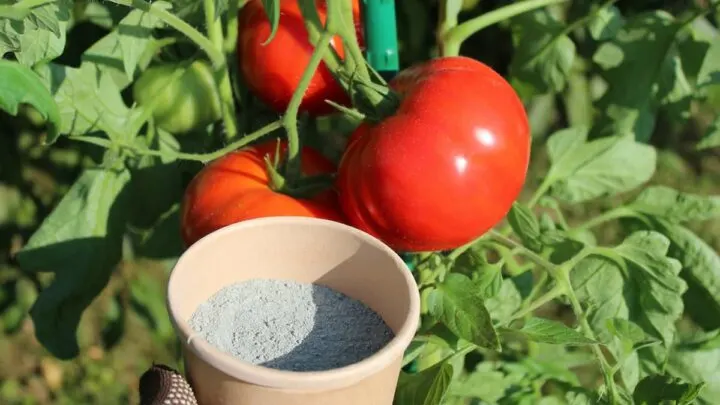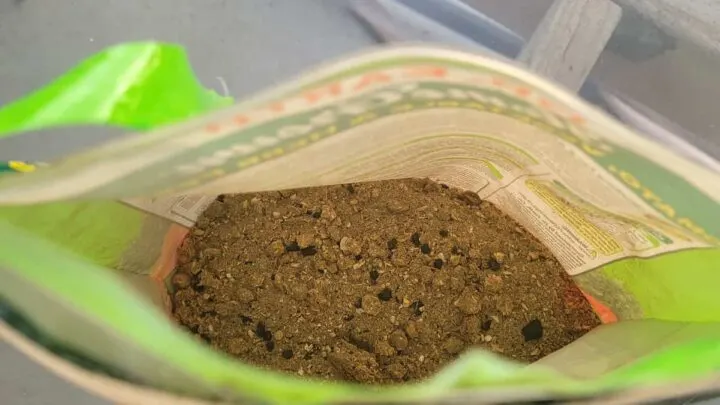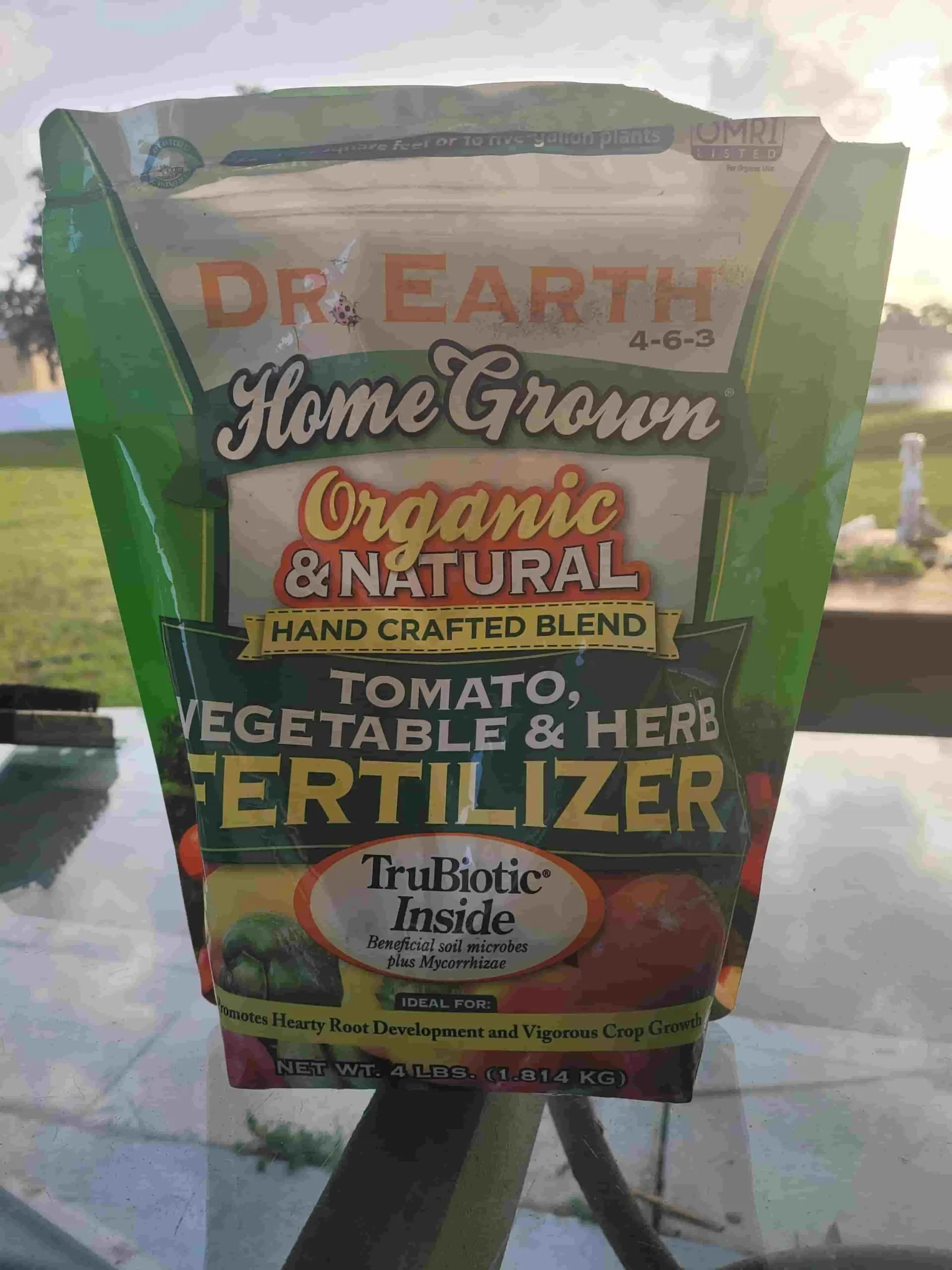Tomatoes, as you may or may not know, are heavy feeders. They desire and thrive off of fertilizers that have plenty of nutrients, and they may even need an extra boost while growing. Nutrients for tomatoes are one of their lifelines; without nutrients, the plants wouldn’t be able to grow such beautiful, delicious, juicy fruit. NPK may be something you’ve considered for fertilizing your tomato, but understanding the correct ratio is key to your tomato plant thriving.
Let’s discuss what NPK is:
NPK is the ratio of N(nitrogen), P(phosphorus), and K(potassium). Of course, tomatoes need other nutrients, such as magnesium, calcium, potash, and more, but NPK is the standard fertilizer guide ratio used worldwide.
Today’s article will discuss and learn more about NPK, what it all means, and its role in a tomato’s life. Stay tuned!

What is NPK?
We’ve already gone over what the three letters mean. N for nitrogen, P for phosphorus, and K for potassium.
Most times, you will see fertilizer bags at the garden stores that use three different numbers with dashes to take the place of NPK. For instance, you may see a bag that is 5-5-5, meaning there is 5 percent nitrogen, 5 percent phosphorus, and 5 percent potassium. These numbers will change according to how much each nutrient is in the bag.
Why these three? Nitrogen, phosphorus, and potassium are what most plants need to grow. There are the most common, and therefore it is useful to have all three in one fertilizer. Other nutrients will be sold separately.
What NPK Do Tomatoes Need, Whats The Best Ratio?
Throughout all stages of tomatoes’ lives, they need different ratios of each three nutrients. Each nutrient has a different job.
Nitrogen– Helps plants grow strong stems and produce chlorophyll (keeps plants green and healthy).
Phosphorus– Phosphorus is essential for tomatoes. It helps convert energy by bringing water to the plant cells and helps strengthen roots.
Potassium– Helps synthesize proteins and sends sugars throughout the whole plant.

Let’s look at which nutrient helps the tomato plant in each stage of life.
| NPK For Seedlings | NPK For Growing | NPK For Flowering |
| Phosphorus is great to have for the seedling stage, as phosphorus helps develop and strengthen roots. A example ratio for seedlings would be 2-5-2 or something similar. You can fertilize your seedlings by just planting them in this fertilizer, or when they are being transplanted (but not ready to go in the ground yet) they can be transplanted into this fertilizer as well. | Nitrogen is perfect for the developmental stage of a tomatoes life. Once the plant is in its final planting spot, have a fertilizer down that is higher in nitrogen. For example, 10-2-5 would be better for the plant. Nitrogen will help keep your plant green, while also making sure your plant stays and grows strong. If your plant is ever looking a bit yellow, or the branches seem a bit weak, you can give your plant a liquid feed of nitrogen to give it an extra boost. | Potassium is something you would want to have healthy doses of when your plant has started to flower and fruit. In fact, it is best to cut off nitrogen all together since you want the plant to stop spending energy on growing its branches and focus on growing its fruit. A ratio example for the flowering stage could look like 5-0-15. Suggested NPK Ratios for tomatoes at various growth stages |
So in general, tomatoes roughly need a 6-24-24 ratio to grow their best. In other cases they may benefit better from a 8-32-15 ratio. Note that both ratios are lower on the nitrogen side, and significantly higher on phosphorous and potassium. When fruiting, potassium is particularly helpful to get those big red results we all like to see.
Can Tomatoes Get Too Many Nutrients?
We know that plants need these three nutrients to produce nice fruit and grow properly. However, there is such a thing as too many nutrients. It is like being overfed; you know how uncomfortable it is to keep eating when you’re already full? Plants, like tomatoes, feel the same way. This can happen to your tomatoes if they get too many nutrients.
Too Much Nitrogen– Too much nitrogen will cause tomatoes to stay vegetating for much longer than they are supposed to, and they may not ever flower. Nitrogen burn will appear on the leaves, making them look as though the edges of the leaves were burned.
This can be fixed by giving the plant a good flush to flush out any extra nitrogen in the soil. Give your plant 5-10 inches of water over the course of a few days, and cut off all nutrients. Soon after, your plants should flower, and your leaves should start turning green again.
Too Much Phosphorus– There isn’t much science on what happens to plants that suffer from too much phosphorus. Leaves will often lose color and turn yellow, and the overall yield of the plant may suffer.
Too Much Potassium– Potassium controls the outcome of the fruit itself. This is why giving more potassium while the plant is fruiting is essential. Too much potassium can cause the tomatoes to taste much more acidic. It can also lead to a deficiency in nitrogen, which can cause stunted growth.

Best Overall Fertilizers for Tomatoes
Finding the right fertilizers for tomatoes can be overwhelming, and NPK numbers will be all over. Here are some great examples of fertilizers and when to use them on your plants.
Espoma Organic Tomato-tone
This is a favorite for all stages of a tomato’s life. Healthy levels of all three nutrients (3-4-6) also include calcium, another vital nutrient for tomatoes. It is recommended that this fertilizer be applied every two weeks throughout the tomato plant’s life.
Dr. Earth Organic 5
A great fertilizer for not only tomatoes but can be used on your whole garden. The NPK for this fertilizer is 4-6-3, so it’s best used on seedlings or in the middle of the tomato plant’s life. This fertilizer also contains other probiotics and healthy organisms to feed your soil.

Neptune’s Harvest Tomato and Veg Fertilizer
A great brand and this particular liquid fertilizer have a ratio of 2-4-2, so while it’s great for seedlings(because it has that higher phosphorus), it can also be used to sustain your plants for their whole cycle.
Down To Earth Fish Bone Meal Fertilizer Mix
Fish bone meal is such an important fertilizer to use in any garden. It is packed full of good minerals and nutrients that plants love and need. This ratio is 4-12-0, so it’s perfect for planting new plants.
Down To Earth Organic Feather Meal
With a ratio of 12-0-0, this fertilizer should be your go-to for that extra nitrogen burst. This is a slow-release compound, so you can mix this in with other fertilizers before you plant and know that you will have a steady nitrogen income throughout your plant’s life.
RAW Nitrogen Plant Nutrient
This fertilizer can be mixed with water and fed if your plants look like they are suffering while in the vegetative state. The ratio is 20-0-0, so this is a huge nitrogen dose for your plants. This can also be mixed with water and used as a spray (called a foiler) to help green up your leaves.
Down To Earth Langbeinite Fertilizer Mix
When your plants start flowering, it’s a great idea to stop the nitrogen altogether. This mix has an NPK ratio of 0-0-22, giving your plants a great boost of potassium to help them along with the flowering stage. Langbeinite is a mineral made up of potassium magnesium sulfate.
FoxFarm Big Bloom Liquid
FoxFarm is a great organic company with many different fertilizers, both liquid, and solids. This big bloom liquid has a ratio of 0-5-7, making it a great transitional liquid to put on your plants. This means that it’s good for when the plants first start flowering, or maybe there are very small baby fruits.
Final Thoughts
NPK is the ratio most plants live by. Nitrogen, phosphorus, and potassium are three of the most important nutrients to help plants grow healthy and strong. Make sure you use the proper nutrients for the right stages of the tomato’s life for the best results and the best harvest. Happy gardening!

Hi there, my name is Allie and welcome to my blog; GareningWithAllie!
Much of what you see written here is just our personal experiences with gardening. Along with the content I write here, there is also a unique collection of gardening topics covered by some of our close friends. I hope you find everything you read here to be helpful, informative, and something that can make your gardening journey the most lovely experience ever! With that said, Happy Gardening!
